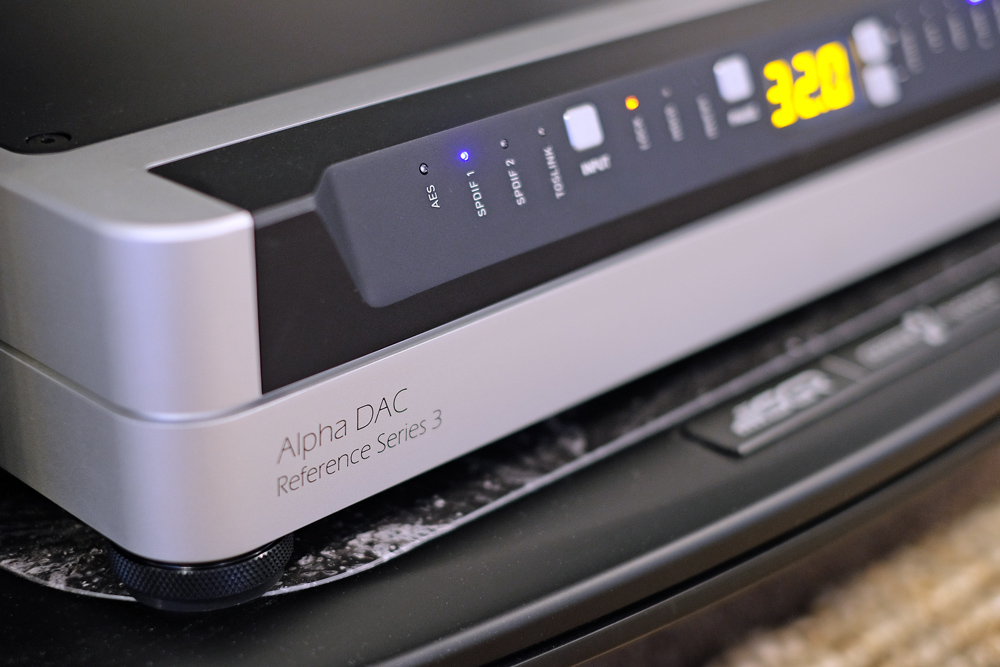Digital technology has advanced in quantum jumps over the last few years. Intergalactic leap-frogging. Despite this evolutionary path, or perhaps because of it, it’s alleged in some circles that only a few hundred green ones are required to provide as-good-as-it-gets sonic performance. Ones and zeros are said to be… well, just ones and zeros. This school of thought is represented via semi-generic brands, many of which manage to provide decent enough build and sound quality. Definitive audio performance? Umm… Yeah, Nah. Not even. Notwithstanding this narrow view of the universe, there are many specialist companies producing truly exceptional digital playback systems at the actual state-of-the-art. Both in terms of excellence in applied technologies and engineering while aiming for the highest levels of audio performance. Among these is Berkeley Audio Design’s Alpha DAC Reference Series 3, an all-out assault on digital playback.
Noise Pollution
California’s Berkeley Audio Design first hit notoriety via its over-performing Alpha DAC launched back in 2008. Belying its relatively affordable price point, the Alpha DAC offered proprietary technologies with comprehensive playback ‘flavours’ by way of several filter options while also providing HDCD decoding capabilities and exceptional sound performance. It became the DAC that others were judged against at its price level and above.
Little wonder. Berkeley Audio Design is the product of a collaboration between Pacific Microsonics co-founders Michael “Pflash” Pflaumer (inventor of the HDCD playback process) and Michael Ritter. The team were responsible for the Pro audio Model One and Model Two ADC and DAC products considered by many audio engineers to be the best. The Pro audio products’ exceptional sound quality led to outstanding success and universal praise, all strong incentives for Pflaumer and Ritter to develop a DAC that could potentially escalate the sound quality to the highest stringent audiophile standards.
Since the original Alpha DAC (non-Reference series), Berkeley Audio Design has released an updated Series 2 version featuring a number of key improvements, most notably in its clock implementation. But the company’s flagship DAC, and the recipient of its full technological resources, is the Reference DAC. Now in Series 3 (i.e. third-generation), the tour-de-force Alpha DAC Reference Series 3 is the subject of this review. Lucky me.
There’s little doubt that Pflaumer and Ritter have poured their utmost onto the Reference 3’s design. The engineering team chose a 24-bit/192kHz multi-bit platform rather than the commonly used 1-bit avenue. Fundamental aspects of the design mandate were the isolation of the digital circuits from electrical noise, controlling potential distortions from the processing stages, paying attention to ultimate time domain stability and applying appropriate mechanical isolation.
Mindful of the outlined strict engineering principals the Reference 3 DAC (for short) design team adhered to, I contacted Michael Ritter to get further insights. I started off by asking Ritter what DAC technology, in terms of chips, etc., was being used.
Regarding the D to A conversion device, it is a commercial sigma/delta device of extremely high conversion accuracy that we use in unique and proprietary ways. Only the DAC core is used and all other functions built into the device are turned off; no filtering, no processing. Those functions are provided by our own superior software implementations in outboard DSP and, because no processing other than D to A conversion occurs in the device, current bounce on the device's substrate is minimized which substantially improves conversion accuracy. Using the device in this way produces results superior to implementing a custom FPGA design.
As far as DSD playback goes, again, Berkeley Audio Design strays on an alternate path to the large majority of DAC makers. Ritter explains thus:
The Alpha DAC Reference Series 3 will reproduce DSD files with extremely high quality by using a music server or computer that performs one-bit to 176.4 kHz, 24-bit PCM conversion in real time, or preferably by creating a 176.4 kHz, 24-bit PCM file ahead of time. This approach results in dramatically improved sound quality and is as operationally easy as playing DSD files and outputting them as DoP or native DSD.
The Reference Series 3 does not use DoP. We considered using that method because it is popular, easy to explain and costs nothing to implement. Most DAC devices, including the one we use, have a DSD input. Processing in the DAC device converts DSD one-bit to multi-bit prior to conversion, but that's the worst possible approach because the one-bit to multi-bit processing and the digital-to-analog conversion occur simultaneously on the same piece of silicon.
A step up would be to perform the multi-bit conversion using our own code in a separate DSP processor. There is a lot of DSP processing power in the Reference Series 3 and it would be easy to implement. However, there would still be additional processing noise from a DSP device physically contiguous to the DAC device. We're extremely vigilant about the noise environment in which the DAC device is operating because its intrinsic performance is phenomenal and one-bit to multi-bit conversion processing noise would degrade that performance.
Experienced listeners have said the best reproduction of DSD recordings they ever heard was through the Alpha DAC Reference Series 3 using outboard one-bit to 176.4 kHz, 24-bit PCM conversion.
I was curious as to other reasons why USB connectivity was shunned, besides the noise-related issues Berkeley considers so crucial.
The Alpha DAC Reference Series 3 deliberately does not have a USB or Ethernet connection because doing so would connect the ground of the DAC to the ground of a computer or music server and all of the RF noise on the grounds of those devices.
Noise isolation is critical to audio quality. The Alpha USB should be considered an integral part of the Alpha DAC Reference Series 3 and always be used with it for the best possible audio quality. The Alpha USB exists to isolate the DAC from all forms of noise generated by a computer or music server digital audio source. With any computer or server we are aware of that has both a USB and a balanced AES/EBU output, using an Alpha USB will improve audio quality. The Alpha USB will also improve the audio quality of any DAC at any price we are aware of that has both a USB and a balanced AES/EBU input.
The Alpha USB uses sophisticated systems designed to maximize input to output noise isolation. The input USB transceiver circuitry is powered by voltage on the USB cable. The Alpha USB's USB input transceiver circuitry is galvanically (DC), capacitively and inductively isolated from the Alpha USB's very low phase noise re-clocked digital audio output.
When using the Alpha USB it is best to treat the USB input cable as "dirty" in terms of RF noise and route it away from the AES/EBU output cable as well as any analog cables. The Alpha USB should not be placed on top of the DAC. It should be positioned at least a foot or so away to physically isolate the "noisy" USB cable. However, power and grounding to the Alpha USB should be the same as the DAC and analog components.
Setting up the Reference 3 was easy, yet also not so much. The unit accepts two S/PDIF inputs via BNC connectors (75 ohms), AES/EBU via XLR (110 ohms) and a TosLink optical. No USB input as talked about above. Nor Ethernet network connectivity, by the way (firmware upgrades are via data files ripped to CD and communicated through signal inputs). So, we established that these days this is less common (though not unique), especially in the case of USB, however, Berkeley Audio Design has discussed above the strong reasons for this. In the company’s view, the USB/network environments must be isolated from the Reference 3’s highly-tuned digital circuitry in order to control electrical noise and other potentially deleterious artefacts which the company claims will affect sound quality.
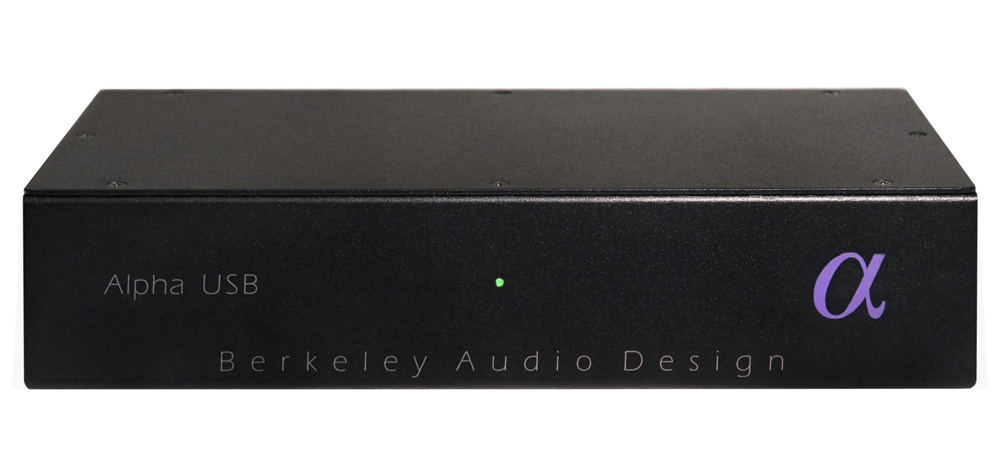
To that end, Berkeley Audio Design offers the optional Alpha USB, a highly-engineered bespoke interface featuring a high quality clock and linear power supply. The Alpha USB converts USB data to S/PDIF or AES/EBU. That’s it. Problem solved. But if you run a server/streamer with USB output (as I do in the superb 432 EVO High-End all-in-one streamer, review here) the Alpha USB, or any other of the many USB converters now available, will be an added expense to consider (approximately AU$3000 and not to forget the extra digital cable required). As far as my 432 EVO High-End server/streamer/Roon Core, connectivity was achieved via its high quality USB output by interfacing with the Reference 3 through the well-regarded Musical Fidelity V-Link USB converter (unfortunately, Australian Distributor Audio Marketing did not have an Alpha USB sample available for loan at the time). No problem with running my CD transport’s S/PDIF coaxial output, of course.
So, we’ve covered the Reference 3’s digital input selection. Analogue outputs are via balanced XLR and unbalanced RCA while an IEC socket is the last item on the rather solidly-assembled rear panel. In fact, the entire unit is massively built from a solid billet of 6061-T6 aluminium alloy machined to exacting levels of fit and finish. I appreciated the Greek Alpha symbol machined on the unit’s top panel, which is anodised black to contrast with the rest of the chassis’ natural aluminium finish. Just about every single function and option is available for selection and/or activation via the rather solid and classy-looking remote control. The semi-translucent buttons hint at the possibility of a backlit feature but, alas, that is not provided.
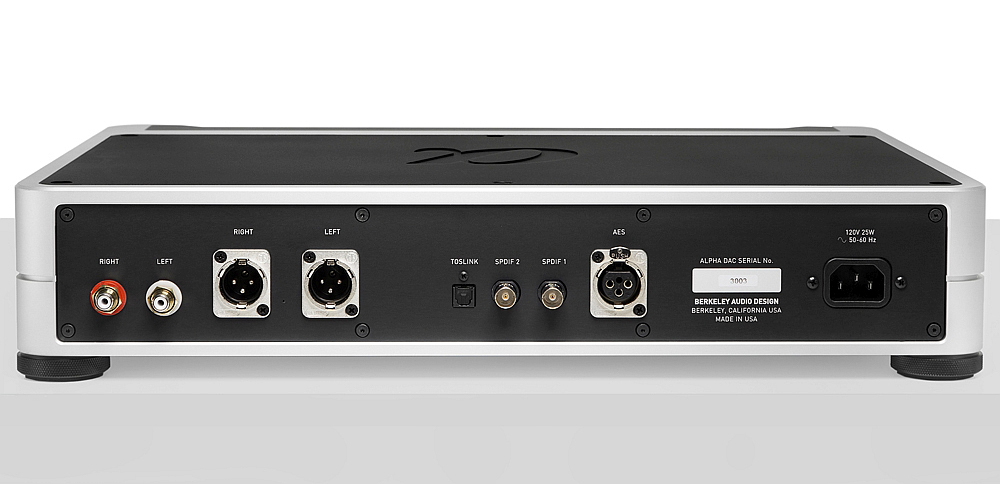
The angled front panel sports comprehensive buttonry and a central information display. From left to right, we have a number of small LEDs corresponding to inputs selected via a square metal button. Three further LEDs are for sync ‘Lock’, HDCD processing and phase inversion with its accompanying square button. The central three-digit LED display informs menu navigation status and automatically reverts to output level (0 to 60dB) with corresponding +/- square buttons. The Reference 3 can be connected directly to a power amplifier. The volume output level reverts to a low ‘25’ if AC is switched off as a safety precaution, then the volume level can be easily adjusted via the remote control. Five further LEDs depict stereo playback, ‘Left’ and ‘Right’ for balance adjustment, sample rate and ‘Filter’. A combination of these functions are controlled via the flanking ‘Mode’ button in conjunction with the +/- buttons. Finally, a ‘Dim’ button controls the display’s brightness. There’s no ON/OFF button as Berkeley recommends leaving the Reference 3 powered-up for optimum performance.
Besides the functions described above, further menu options include the ability to independently adjust channel balance (0.1dB steps) and channel gain (0.05dB steps). Balanced universal gain is available via two settings of +18dBu (6.15Vrms) maximum and +12dBu (3.1Vrms), with the recommended option being the latter for best performance. Berkeley also defaults Filter 1 interpolation filter as the recommended option for best sound performance while minimum phase/minimum pre-ringing Filter 2 is provided as an alternative. Both Filter 1 and 2 offer alternative 16-bit and 24-bit options. You may experiment to your heart’s content. Me? I preferred the 24-bit Filter 1 setting which coincided with the Berkeley experts’ recommendation. Oh, the Reference 3 has MQA playback capabilities. MQA rendering (and HDCD processing, for that matter) takes place automatically and status is displayed via the central status window. Note that as a renderer the first MQA unfold will need to be handled via your playback software (Roon, for example).
In operation, it must be said that the Reference 3 was faultless. Inputs were recognised and synched-up immediately. All the menu options were easily accessible – most via the remote control – and all functional aspects were impeccable. Basically the Reference 3 is a plug ’n’ play DAC solution.
Close Mic’ed
On Berkeley’s website, a ‘blurb’ sentence used to describe sonic performance states “an immediacy and presence of music reproduction that was closer to the microphone feed than ever before.” You’d be excused to think that statement sounds like a marketing department’s persistently over-used old chestnut with a modicum of truth or, on the other hand, you may see it as unrealistically far-fetched. But man, once you hear the Reference 3, you may reconsider Berkeley’s pronouncement as near-gospel. The first 30 seconds of the first track I played – Youn Sun Nah’s rendition of “My Favourite Things” from her Same Girl album via Tidal – demonstrated the sheer truth in that line. This may just about be the most transparent, the purest, most nuanced and natural digital playback I’ve heard in my system. There, I’ve said it way-early in the piece…
This comes about via a number of reasons, with possibly the main one being the super, super low noise floor. I guess Pflaumer and Ritter were on to something with that circuit isolation and noise extermination extremism. On that track, the clarity and harmonic content of the backing kalimba, or mbira, is jaw-dropping. If you think you know your tweeters, think again. Slot the Reference 3 into the system and discover an extension, a level of detail, a lengthy decay and a harmonic complexity that is truly extraordinary.
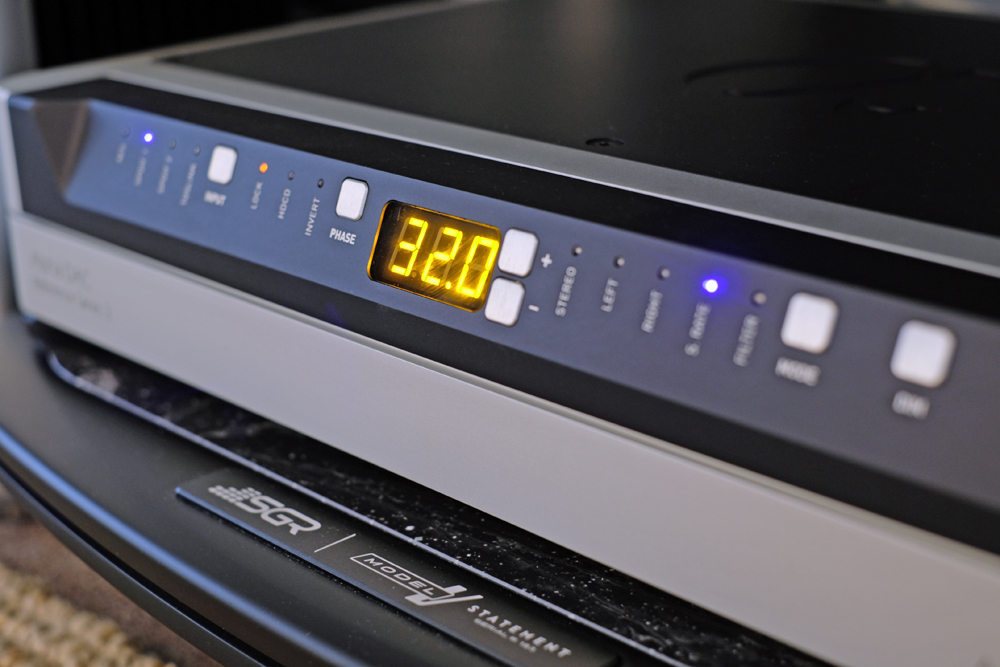
The Reference 3’s resolution powers are exceptional. There’s a sense of realistic detail – not exaggerated in any way – and in-room presence that is addictive. “Cantaloupe Island” from Jeff Goldblum’s fun jazz concert event The Capitol Studio Sessions placed me in the Los Angeles venue, in amongst the audience. The band boogies and Goldblum controls the piano while the Reference 3 offers you revelatory insights into the music. And man, the sonic field is truly amazing! It’s wide, deep, tall and ambience-rich, all making for a sound mirage mimicking a true live performance. Outstanding.
All that clarity and inherent naturalness applied across the entire bandwidth. Bass-strong tracks were rare examples of expertly balancing genuinely resonant timbres, true harmonic reproduction, expressive dynamics and sheer accuracy. In addition to many others I listened to, well-recorded bass virtuosic tracks from Nenad Vasilić’s The Art of Balkan Bass and from Renaud García Fons’ Solo were pure musical joy. The Reference 3 communicates a low-end with power and rhythm. There’s so much information in the textures and nuances and in the way the DAC presents transient rhythmic pace that you’ll be almost involuntarily toe-tapping and air-drumming. It’s an engaging sound you’ll not escape.
I’m truly over the clichéd term endlessly bandied around by audio writers and enthusiasts alike when referring to resolution: “It’s like a veil has lifted” (wait, maybe negating the cliché is now itself a cliché?). Be that as it may, the Reference 3 encapsulates that truism to its maximum potency. You will hear a timbrel truth and an inherent clarity which will astound you. Pinchas Zukerman’s violin (Sibelius’ Violin Concerto conducted by Daniel Barenboim) is masterfully played and, via the Reference 3, equally skilfully reproduced. It’s an overwhelmingly beautiful piece and the violin’s rosin-on-string is almost palpable. Zukerman’s instrument dithers and cries with realistic oscillations which even expose the maestro’s finger presses. This is mesmerising playback. Crescendos are literally stunning too. When the orchestra swells then massively erupts only to subsequently abruptly halt, it’s a deathly silence after the violence preceding it.
And then you have vocals… Seriously? This good? Chris Cornell’s “Can’t Change Me” from the live acoustic Songbook via Tidal had me close to tears. Not just because I know the sad early passing of troubled Cornell but also because the Reference 3 expresses the man with such present lucidity, such a clear view into the event and so fundamentally demonstrates his unrivalled talent. Cornell’s voice growls and soars – one of the best rock voices of our time – and the DAC tracks his vocals with all the emotion, meaning and expression Cornell intended and so easily delivers.
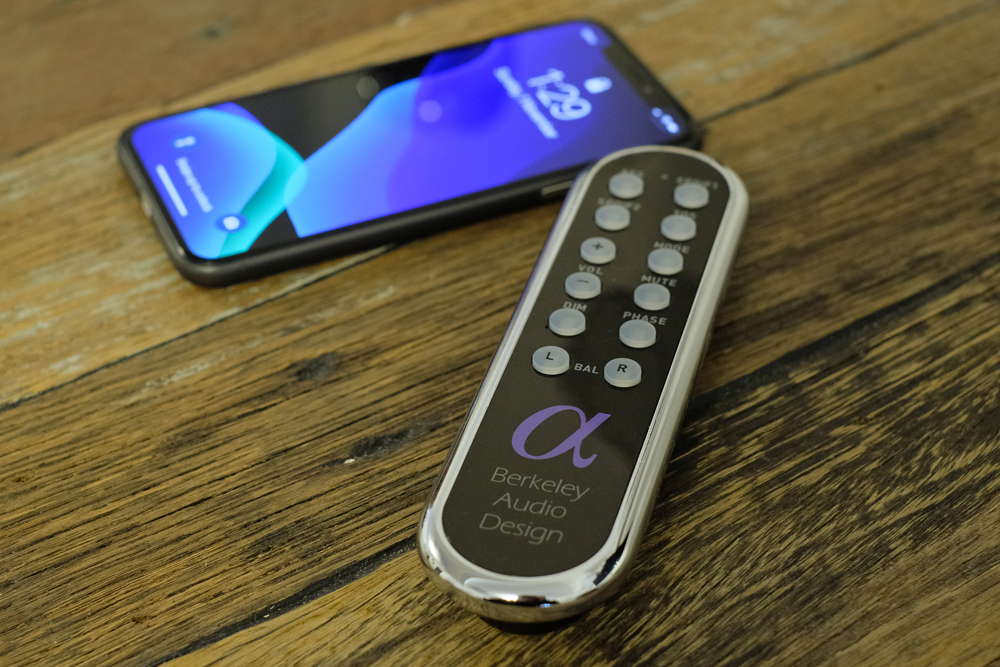
The juxtaposition of Fitzgerald and Armstrong on “Let’s Call the Whole Thing Off” from The Best of Ella Fitzgerald and Louis Armstrong on Verve once again highlights the superb transparency, coherency and sublime levels of detail the Reference 3 is capable of. The playful interaction, the sweetness and the guttural, are superbly interconnected yet also expertly separated. They are two very different, individual voices each represented to striking levels of truth and purity.
When it comes to dynamic expression, few DACs I’ve had in-house have come close to the Reference 3. It’s a resoundingly effortless scaling from the calmest ppp to the most forceful fff. Gustav Holst’s The Planets is an appropriate illustration of the tremendous power the Reference 3 DAC can potentially wring from your system. On “Mars the Bringer of War”, the horn section’s ominous build-up plays to enhance mood and instil a sense of… dread. Then, all hell breaks loose, with the Reference 3 unleashing a violent assault to the senses that will leave you gasping. This DAC will not be the dynamic expression bottleneck in your system. With it in-situ, if you’re not being super-satisfied with dynamic music – sometimes even startled – point to a culprit elsewhere in the audio chain. And its thorough refinement also allows the subtlest of detail and the most delicate of passages to shine though too. Alternative tracks from The Planets (and numerous other orchestral works) served to illustrate the large soundfield and precise imaging powers the Reference 3 is capable of.
Conclusion
The Berkeley Audio Design Alpha DAC Reference Series 3 takes the flag for the best DAC I’ve had the pleasure of reviewing. Yes, it’s an uncompromising design with an unyielding engineering architecture. It eschews a USB input which may be pertinent to many servers and streamers devoid of an alternate type of output connectivity. It’s a surmountable limitation with a simple enough solution. Granted, you’ll be budgeting for an added cost via, preferably, Berkeley’s own USB converter and an additional cable interface. When playing at this level, the additional element, if applicable, is not a biggie.
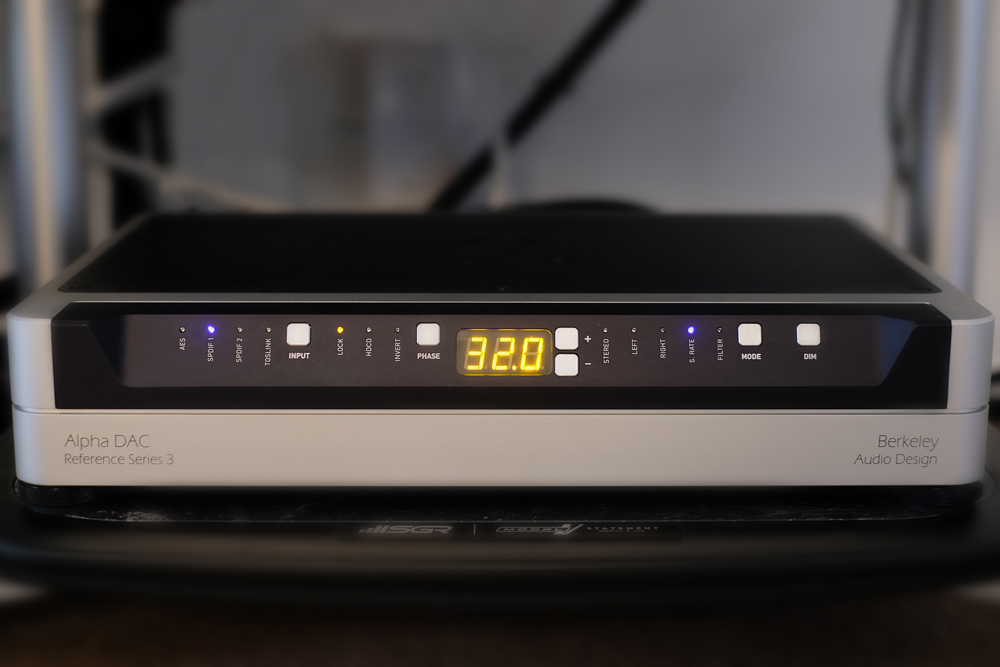
That solvable aspect aside, the Reference 3 romps, swings and shimmies to whatever style of music you care to play. It’s a profoundly transparent window into the music. It provides cognitive insights into the musicians’ intent in ways that no other DAC has communicated to this level (though one particular winged lion Dane would be the closest of all). It’s tonally exceptionally accurate and it is balanced in terms of not emphasising any area of the bandwidth – it’s never harsh nor shouty, not soft nor bass-bloated. And man, that resolution…
To the truest encapsulation of the word ‘Reference’, when it comes to the Alpha DAC Reference Series 3, I can but add one succinct word to celebrate its purest meaning: Triumph.
… Edgar Kramer
This email address is being protected from spambots. You need JavaScript enabled to view it.
Associated Equipment
- Speakers — Wilson Audio Alexia Series 2, Axis Loudspeakers VoiceBox S(nearfield monitor), Vermouth Audio Little Luccas Mk.II
- Amplifier — Gryphon Audio Antileon EVO
- Preamplifier — Supratek Cortese, Lightspeed Attenuator LDR passive
- Sources — Digital: 432EVO High-End Music Server Roon Core, Yamaha CD-S2100 transport, Totaldac d1-core DAC. Analogue:Transrotor Crescendo with Konstant Studio controller, Reed 1x Tonearm with upgraded internal wiring, Shelter Harmony cartridge, Supratek Cortese & REDGUM Audio RGPH2 phono stages
- Processor — DEQX PreMate
- Cables — Vermouth Audio Reference loom, Vermouth Audio Black Pearl Mk.II loom
- Audio Rack — SGR Audio Statement Model V
- Acoustic Treatment — Vicoustic Multifuser Wood, Wavewood Ultra, Cinema Round Premium and Super Bass Extreme
- Miscellaneous — GigaWatt PF-1 EVO, Les Davis Audio Viscoelastic CLD discs, VRC Vinyl Record Cleaning system plus miscellaneous accessories
Berkeley Audio Design Alpha DAC Reference Series 3
Price: AU$34,995
Warranty: Three Years
Australian Distributor: Audio Marketing
+61 2 9882 3877
www.audiomarketing.com.au
Berkeley Audio Design
CA 94530
United States of America
+1 510 277 0512
www.berkeleyaudiodesign.com
